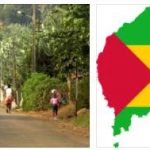
Economy
Economy overview: The majority of the population still provides their livelihood through agriculture and animal husbandry, despite the fact that in the 1970s and 1980s. many nomads and farmers were forced to move to the cities due to constant droughts. Mauritania has extensive deposits of iron ore, which makes up 50% of its exports, but the fall in global demand for iron ore has led to a decrease in its production. The country’s coastal waters are one of the richest fishing areas in the world, but the over-activity of foreign fishing companies threatens this key source of income. The country’s first seaport opened in 1986 near Nouakchott. In recent years, drought and economic mismanagement have led to an increase in external debt. March 1999 The Mauritanian government signed an agreement with the joint office of the World Bank and the IMF on obtaining a soft loan for economic restructuring in the amount of $54 million. In 2000, Mauritania withdrew from the Economic Community of West African Countries. Privatization is underway, the country has received external debt relief, which gives hope for continued growth, especially in the construction, telecommunications and information sectors. The exploration and production of diamonds and oil begins. especially in the construction, telecommunications and information sectors. The exploration and production of diamonds and oil begins. especially in the construction, telecommunications and information sectors. The exploration and production of diamonds and oil begins.
GDP: at purchasing power parity – $5.4 billion (2000 est.).
Real GDP growth rate: 5% (2000 est.).
GDP per capita: at purchasing power parity, $2,000 (2000 est.).
The composition of GDP by sectors of the economy: agriculture: 25%; industry: 31%; services: 44% (1997).
Proportion of population below the poverty line: 50% (1996 est.).
Percentage distribution of family income or consumption: per 10% of the poorest families: 2.3%; by the top 10% of families: 29.9% (1995).
Inflation rate at consumer prices: 4.5% (2000 est.).
Labor force: 750,000 people (1999).
Employment structure: agriculture 47%, services 39%, industry 14%.
Unemployment rate: ?3% (1995 est.).
Budget: revenues: $329 million; expenses: $265 million, including capital expenditures of $75 million (1996 est.).
Spheres of the economy: fishing, mining of iron ore and gypsum.
Growth in industrial production: 2.2% (1999).
Electricity generation: 151 million kWh (1999).
Sources of electricity generation: fossil fuels: 82.78%; hydropower: 17.22%; nuclear fuel: 0%; others: 0% (1999).
Electricity consumption: 140.4 million kWh (1999)
Electricity export: 0 kWh (1999).
Electricity import: 0 kWh (1999).
Agricultural products: dates, millet, sorghum, rice, corn, dates; cattle, sheep; fish products.
Export: $333 million (free on board, 1999)
Exports: fish and fish products, iron ore, gold.
Export partners: Japan 18%, France 17%, Italy 16%, Spain 11% (1998).
Imports: $305 million (free on board, 1999)
Imports: machinery and equipment, petroleum products, capital goods, foodstuffs, consumer goods.
Import partners: France 27%, Benelux 9%, Spain 7%, Germany 7% (1999).
External debt: $2.1 billion (1999) Economic aid recipient: $300 million (1998)
Donor of economic aid:
Currency: ouguiya.
Currency code: MRO.
Exchange rate: MRO/USD – 250.870 (December 2000), 238.923 (1999), 209.514 (1999), 188.476 (1998), 151.853 (1997), 137.222 (1996).
Fiscal year: calendar year.
Telecommunications
Telecommunications Telephone lines: 26,000 (2000).
Mobile cellular phones: no data available.
Telephone system: limited system of cable and land lines, some microwave radio relay lines and radiotelephone stations (upgrading); internal: mainly cable and open communication lines; recently completed the creation of a national satellite telecommunications system connecting Nouakchott with the administrative centers of the regions; international: satellite earth stations – 1 Intelsat (Atlantic Ocean region) and 2 Arabsat.
Broadcast stations: AM – 1, FM – 2, shortwave – 1 (1998).
Radio receivers: 360,000 (1997).
Television broadcast stations: 1 (1997).
TVs: 87,000 (1998).
Internet country code: mr
Internet providers: 5 (2000).
Number of users: 3,500 (2000).
Transport
Transport Railways: total length: 750 km (single-track); note – used and managed by a state-owned mining company; with standard gauge: 750 km (1.435 m gauge) (1995).
Roads: total length: 7,660 km; coated: 866 km; unpaved: 6,794 km (1996)
Waterways: ferry crossings on the Senegal River.
Ports and harbours: Bogey, Caedy, Nouadhibou, Nouakchott, Roseau.
Merchant fleet: none (2000 est.).
Airports: 26 (2000 est.).
Airports with paved runways: total: 8; from 2438 to 3047 m:3; 1524 to 2437 m: 5 (2000 est.).
Airports with unpaved runways: total: 18; from 2438 to 3047 m:2; from 1524 to 2437 m:4; from 914 to 1523 m:9; less than 914 m: 3 (2000 est.).
Armed forces
Branches of the armed forces: army, navy, air force, national gendarmerie, national guard, national police, presidential guard. See militarynous.com to know more about Mauritania Military.
Total military manpower: men 15 to 49: 624,375 (2001 est.).
Eligible for military service: males aged 15 to 49: 302,699 (2001 est.).
Number of persons reaching military age each year:
Military spending in dollar terms: $41M (FY97-98).
Military spending as part of GDP: 2.7% (FY97-98)







